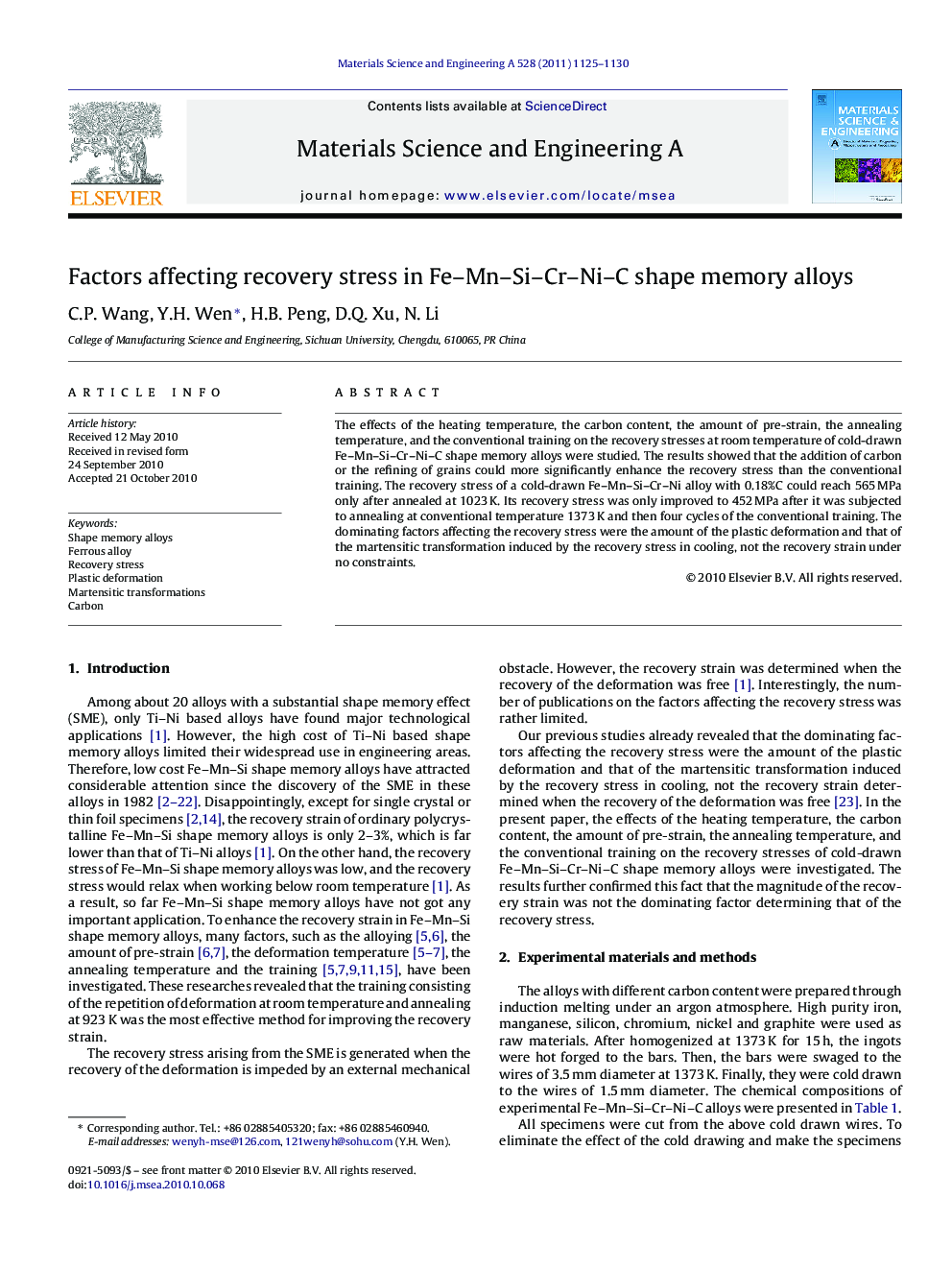| Article ID | Journal | Published Year | Pages | File Type |
|---|---|---|---|---|
| 10646144 | Materials Science and Engineering: A | 2011 | 6 Pages |
Abstract
ⶠThe dominating factors affecting the recovery stress were the amount of the plastic deformation and that of the martensitic transformation induced by the recovery stress in cooling, not the recovery strain under no constraints. ⶠThe addition of carbon or the refinement of grains significantly enhanced the recovery stress because of the remarkable decrease of the amount of the plastic deformation and that of the martensitic transformation induced by the recovery stress. ⶠThe conventional training was not the most effective method for improving the recovery stress although it was the most effective method for improving the recovery strain. ⶠThe maximal recovery stress of 565 MPa at room temperature was obtained in a cold-drawn Fe-Mn-Si-Cr-Ni alloy with 0.18%C alloy only after annealed at 1023 K; its recovery stress was only improved to 452 MPa after four cycles of the conventional training.
Keywords
Related Topics
Physical Sciences and Engineering
Materials Science
Materials Science (General)
Authors
C.P. Wang, Y.H. Wen, H.B. Peng, D.Q. Xu, N. Li,
